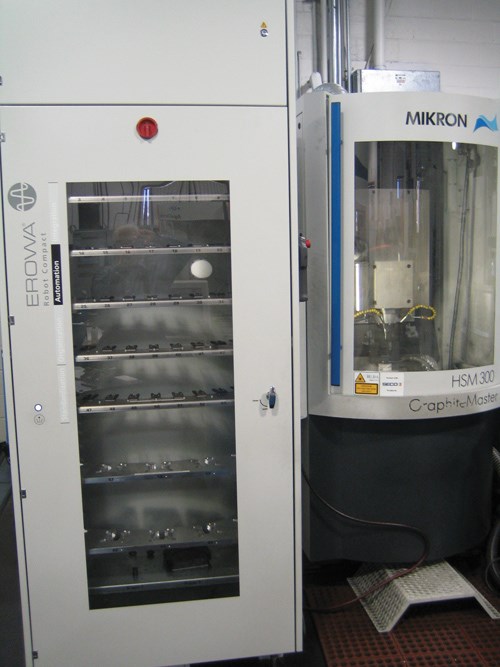Sustained Commitment to Automation Reaps Rewards
Through consistent automation strategies, one mold shop was able to implement new equipment and ramp up training, allowing them to accelerate out of tough times and be prepared for upcoming business opportunities.
#Education #industry40
Mold Craft, Inc. (Willernie, MN) plans to come out of the recent recession with numerous advantages for their customers in the injection mold and precision machining market segment. The advantages offered are a result of the company’s long-term commitment to automation technologies. While Mold Craft has been manufacturing injection molds for more than 45 years, their sustained commitment to automation continued throughout 2009 and the first part of 2010 with several additions to its manufacturing automation portfolio.
Featured Content
Automated Beginnings and Benefits
Initially, Mold Craft found that adding tooling storage with a robotic interface produced higher production rates, increased productivity and resulted in better quality. “Our five-year plan was to bring in more advanced automation in early 2009. Although counterintuitive, the timing couldn’t have been better when these purchases were placed on the production floor in early 2009. In the heart of the recession, we were able to implement the new equipment and get our training behind us, which has allowed us to accelerate out of the tough times and be ready for the opportunities that 2010 has to offer,” explains Tim Bartz, VP Operations at Mold Craft.
“A significant value-add we provide is our creative design capability. Automation begins in the design department and assists us in consistently executing our designs—providing our customers with very tight-tolerance molds,” notes Justin McPhee, VP Engineering.
Some of the advantages offered to customers as a result of the automation additions integrated throughout 2009 include the following:
- Cost control resulting in lower prices through more spindle time and lights out manufacturing. Automation also provides more efficient use of materials, cutters and other supplies.
- Consistency with changing out parts the same every time with every part using the same “zero” throughout the manufacturing process.
- Tight tolerances and in-process quality inspection.
- Leadtime reduction through improvements in productivity, cycle time and accuracy.
- Cavity interchangeability improvements through accuracy, inspection and consistency.
Automation Set-up
Mold Craft’s automation now includes tool-to-tool robotics and storage facilitation capabilities. The latest installation is the newly arrived Mikron HSM500 with simultaneous 4-axis capability integrated with their existing Erowa Multi-Twin Robot that was already mated to an Agie Hyperspark 2 Sinker EDM.
Robotic interface from the mill to the sinker is enhanced with additional pallet and electrode storage using the Erowa system capable of storing 45 workpieces and 210 electrodes. The second piece of automation purchased this year was an Erowa ERC Robot that is able to feed 10 workpieces and 132 electrodes into a Mikron HSM 300 Graphite Master.
Summary
Automation is a culture developed from the top and embraced by the tooling craftsmen at Mold Craft. Highly-skilled CNC specialists strive to fully utilize the capacity of the robots and the machines each day and night. They recognize that it ensures their future, Mold Craft’s future and the future of moldmaking in the U.S.
With enthusiasm Bartz states, “Mold Craft’s plan is to introduce more automation where it will result in manufacturing improvement, cost reductions for our customers and improved leadtimes.”
RELATED CONTENT
-
Pre-Machining Best Practices for Industry 4.0
Emphasis on technology that streamlines processes and provides repeatable outputs in your machining operations is key to automation and data-driven intelligence. Here are some common pre- and in-process attributes to consider as they pertain to process efficiency and reliability.
-
What is Scientific Maintenance? Part 2
Part two of this three-part series explains specific data that toolrooms must collect, analyze and use to truly advance to a scientific maintenance culture where you can measure real data and drive decisions.
-
Predictive Manufacturing Moves Mold Builder into Advanced Medical Component Manufacturing
From a hot rod hobby, medical molds and shop performance to technology extremes, key relationships and a growth strategy, it’s obvious details matter at Eden Tool.















